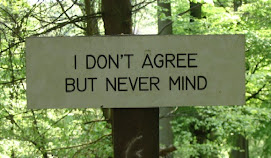

James V Ouellet is an American researcher, who worked on the famous - and suitably named - Hurt Report in to motorcycle crashes in the USA. Its findings were used as the basis for much US bike training by the MSF.
He also wrote:
Lane Positioning for Collision Avoidance: An Hypothesis
ABSTRACT
Collision avoidance for motorcycles is usually synonymous with braking and swerving. Except for conspicuity, research and training in collision prevention have focused almost exclusively on the two evasive actions. However, in motorcycle/car collisions, the emphasis on braking and swerving—and on antilock braking systems—may be overrated.
Braking often can do little to delay the rider’s arrival at point of impact; swerving
requires more time than is usually available, and panicky riders often bungle what little chance they have to avoid a collision. This paper presents a mathematical reconstruction of the two most common motorcycle/car collision scenarios: a car turning left across the path of a motorcycle coming from the opposite direction, and perpendicular intersection collisions. It examines the effect of 1) initial motorcycle lane position and 2) braking effectiveness on collision avoidance. The reconstruction suggests that the motorcycle rider can do more to avoid a collision by moving laterally away from a threatening vehicle, putting at least one lane-width between them before a vehicle begins to violate his right-of-way, than he can by effective braking after the other vehicle has begun to violate his right-of-way.
This paper also included some fascinating diagrams. Allowing for US road lanes and layouts, and vehicles, being different to those we have here in the UK, he predicted 'at risk' zones for a rider on the approach to a junction, and how they vary with position across the lane width.
The motorcycle path is marked to show the possible collision outcomes, depending on
where the motorcycle is at the moment the car begins its turn.
Zone A represents a region in which the motorcycle, at constant speed, would clear the impact area before the car arrives; similarly, a motorcycle in Zone F would arrive at the impact area after the car has cleared it. A motorcycle in Zone B when the car begins its turn could avoid impact if the rider maintains constant speed, but would collide if the rider brakes sufficiently to delay his passage beyond the conflict region long enough to allow the car to impact the motorcycle. A motorcycle in Zone C when the car begins its maneuver would be unable to avoid impact by braking. A motorcycle in Zones D or E when the car begins its turn could avoid impact by delaying its arrival at the conflict area by means of front and rear braking (-.4g > a > -.7g) or rear-only braking (a > -.4g), respectively. Of course, if a motorcycle in Zones D or E fails to brake at the necessary deceleration rate, then it will strike the car.
I've posted just two of the diagrams from the report, but here's his conclusion:
DISCUSSION
The preceding analysis points to a ridiculously simple collision avoidance strategy: when faced with a potential right-of-way threat ahead, the motorcycle rider should move away laterally from the threat. That is, move to the right for a left-turning car or one crossing from the left. Or, move to the left for a car threatening from the right. And slow down and get ready when a potential threat is observed up ahead.
These general principles can be applied to situations not covered in this paper. Even
when a specific threat is not obvious, the rider can choose a lane position that balances the risks of where various potential threats might come from. For example, in riding down a residential street, where cars or pedestrians can emerge from either side, the rider may elect to ride down the center of the street. When riding down a street such as that diagrammed in this paper, the left side of the right lane (position 2L) offers a balance of risks from hazards that might come from either left or right, even when no threat is apparent.
The selection of optimum lane positioning is not a substitute for effective braking. It can reduce, but not eliminate collision risk, and is an extremely useful adjunct to skilled braking. On the other hand, effective braking is not a substitute for good lane positioning.
However, lane positioning does have the advantage that it can be performed in the
relatively low-stress situation before a car actually begins to violate the motorcycle rightof- way; therefore it is more likely to be done properly than emergency braking in a panic situation. One final caveat: lane positioning should not be pursued at the expense of conspicuity.
For example, it does a rider little good to position himself in lane 2 if doing so means that a large vehicle in lane 1 obstructs the view of the motorcycle from other traffic waiting to turn left. This is no small problem. Hurt et at [1] reported that the view of the motorcycle was blocked in nearly one-third of motorcycle-car accidents, usually by other traffic near the motorcycle.
In the final post, how "Z Line" combines the benefits of Ouellet with improvements in conspicuity.
.





No comments:
Post a Comment